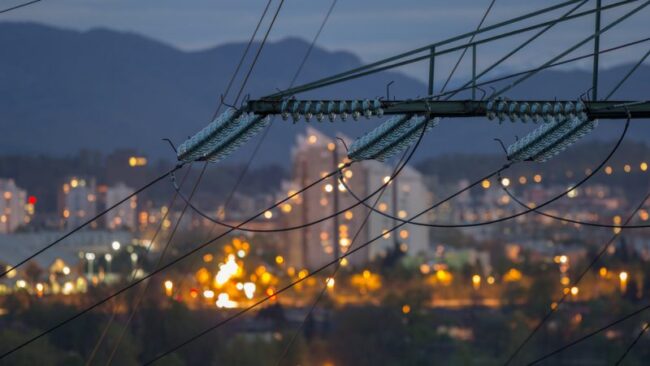France to expand electricity interconnections with Ireland, Italy

Irish and French energy regulators confirmed that the Celtic Interconnector will be completed by 2027, despite a substantial re-evaluation of the project’s costs. The French grid operator also confirmed the partial launch of the Savoy-Piedmont electricity interconnection.
The network operators behind the Celtic Interconnector project, an electricity connection between France and Ireland, informed the respective energy regulators on 30 September that the completed project costs will be more than €1.6 billion, an increase of 75% on the initial 2019 estimates of €930 million.
Following their reassessment of the project, French energy regulator CRE and their Irish counterpart CRU confirmed on Thursday (10 November) that the project will be going ahead, due to be completed in 2027.
“The project presents […] a strong economic and environmental interest, despite the significant increase in costs,” CRE said.
This project, which has been recognised as a project of common interest (PCI) by the EU, will link La Martyre in Brittany to Knockraha in Ireland via a 575 km cable for an installed capacity of 700 megawatts (MW).

The Celtic Interconnector will link La Martyre in Brittany to Knockraha in Ireland via a 575 km pipeline and an installed capacity of 700 megawatts (MW). [shutterstock / urbans]
Initially, the Irish grid operator, EirGrid, was responsible for 65% of the costs, while the French grid operator RTE was responsible for the remaining 35%. But rising costs are changing the picture.
Firstly, the regulators had to reassess the initial project cost in light of estimated inflation between now and its scheduled commissioning in 2027, an increase from €930 million to €1.178 billion. Up to this amount, the cost allocation will stay the same.
The remaining €445 million will be shared equally, following the revaluation of over €1.6 billion.
The EU has also agreed to subsidise the project with €530 million. According to the CRE, “the project has a significant strategic interest” as it establishes a direct link between French and Irish networks “in the context of Brexit and solidarity between EU member states”.
France and Italy
Beyond the Irish project, the Savoy-Piedmont electrical interconnection between France and Italy became partially operational (50%) on Monday (7 November).
This is the first step towards the complete commissioning in 2023 of the 1,200 MW of capacity of the longest direct current electrical interconnection in the world, according to operator RTE.
Although the project is facing delays and costs more than €1 billion, the president of the CRE Emmanuelle Wargon said she was pleased that “mutual assistance between France and Italy is growing stronger every day”.
Ultimately, the project will increase the capacity of electrical exchanges between Italy and France to 4,450 MW, an increase of 40% compared to the capacity currently installed.
France currently has 50 cross-border electricity interconnections.
Gas interconnections
When it comes to gas interconnections, France continues to push ahead, driven by the supply crisis fuelled by the war in Ukraine.
On 20 October, France and Spain agreed to abandon the MidCat gas pipeline project and replace it with the BarMar hydrogen pipeline project, between Barcelona and Marseille.
The wider ambition is to contribute to the construction of a European Hydrogen Backbone connecting 21 countries through 39,700 km of hydrogen infrastructure by 2040.
Such a project, be it gas or hydrogen, is of great interest to Germany, whose energy strategy is based in part on the relocation of production and the diversification of producers, and therefore the expansion of cross-border interconnections.
In addition, since 13 October, France has been sending gas to Germany via the flow reversal at the Obergailbach/Medelsheim interconnection.
The aim is to supply 100 gigawatt hours (GWh) of gas per day to Germany, i.e. as much energy as four nuclear reactors, according to Thierry Trouvé, Managing Director of GRTGaz, who outlined the project on 14 September during the presentation of its winter outlook.
Source: Euractiv (15.11.2022)
Other news stories
Associated people

Robin Morris
View Robin's details

